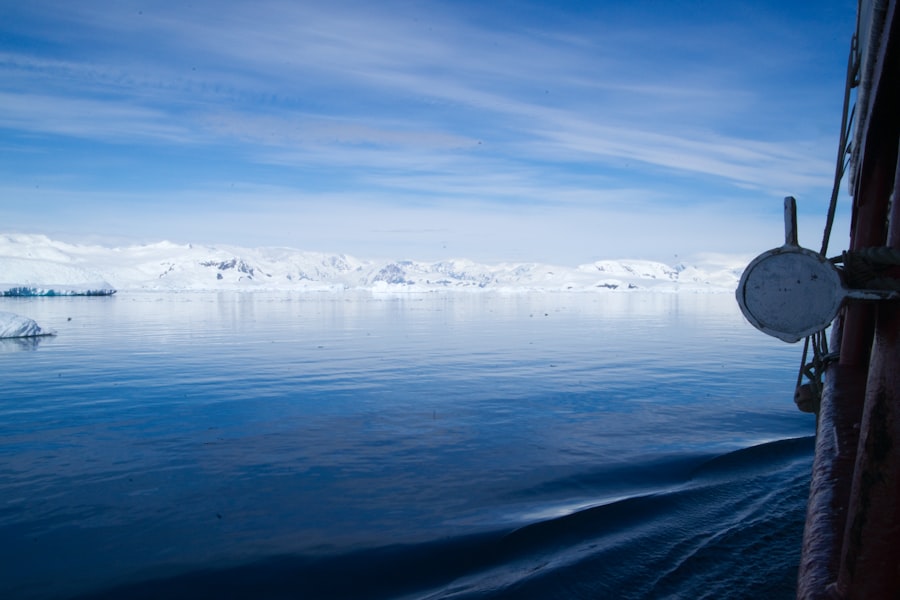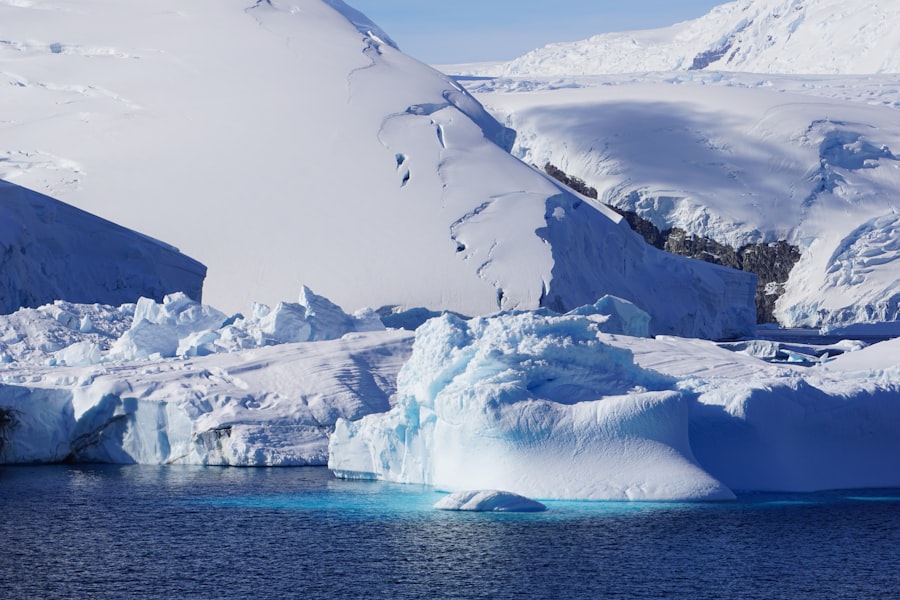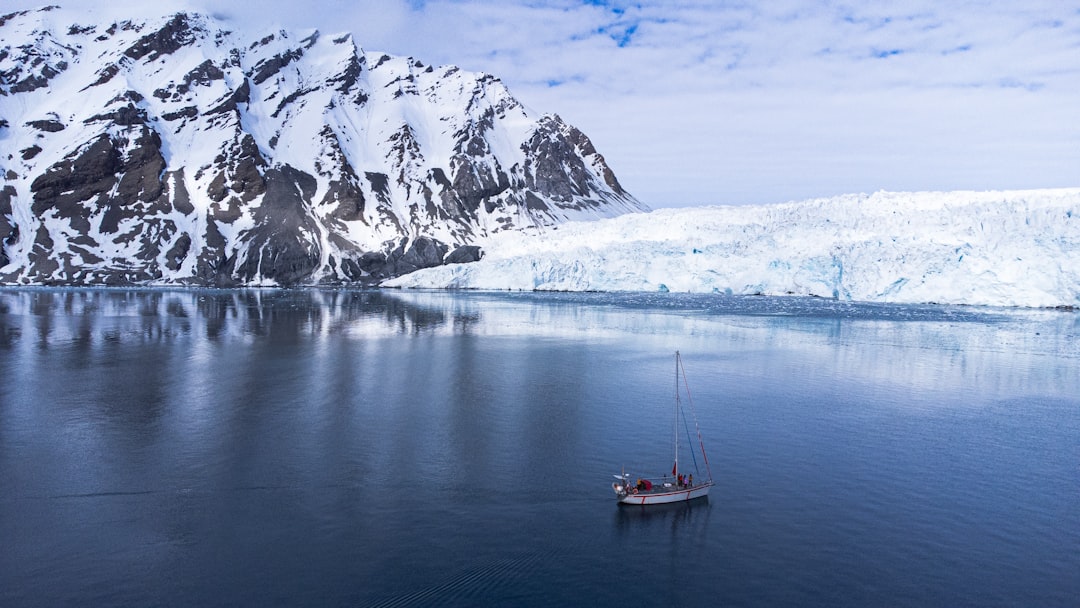The Antarctic Passage, often referred to as the Drake Passage, is a body of water that separates South America from Antarctica. This stretch of ocean is notorious for its turbulent waters and unpredictable weather patterns, making it both a challenging and fascinating area for explorers and researchers alike. The passage is not only significant for its geographical features but also for its role in global ocean currents, which play a crucial part in regulating the Earth’s climate.
The waters of the Antarctic Passage are rich in marine life, serving as a vital habitat for various species, including seals, whales, and seabirds. Navigating the Antarctic Passage requires a deep understanding of its unique characteristics. The passage is known for its strong currents and high winds, which can create rough seas that pose risks to vessels.
The convergence of the Atlantic, Pacific, and Southern Oceans in this region leads to complex interactions that can result in sudden changes in weather conditions. For those planning an expedition, comprehending these dynamics is essential for ensuring safety and success. The Antarctic Passage is not merely a route; it is a gateway to one of the most remote and pristine environments on Earth.
Key Takeaways
- The Antarctic Passage is a challenging and remote route that requires careful planning and preparation.
- Navigational challenges in the Antarctic Passage include icebergs, unpredictable weather, and limited visibility.
- Weather and climate considerations in the Antarctic Passage can be extreme and rapidly changing, requiring flexibility and adaptability.
- Wildlife and environmental conservation are important considerations in the Antarctic Passage, with strict regulations in place to protect the fragile ecosystem.
- Safety and emergency protocols, as well as mental and physical preparation, are crucial for a successful expedition in the Antarctic Passage.
Planning and Preparing for the Expedition
Planning an expedition through the Antarctic Passage involves meticulous preparation and attention to detail. Explorers must consider various factors, including the timing of the journey, the type of vessel to be used, and the specific goals of the expedition. The ideal time for traversing the passage is during the austral summer months, from November to March, when conditions are relatively milder.
During this period, daylight hours are extended, allowing for more time to navigate and explore. In addition to timing, selecting the right vessel is crucial. Ice-strengthened ships are often preferred for their ability to withstand harsh conditions and navigate through ice-laden waters.
Furthermore, assembling a skilled crew with experience in polar navigation can significantly enhance the chances of a successful expedition. Each member should be well-versed in their roles and responsibilities, ensuring that everyone is prepared for the challenges that lie ahead. Comprehensive training sessions prior to departure can help build teamwork and confidence among crew members.
Navigational Challenges in the Antarctic Passage

Navigational challenges in the Antarctic Passage are numerous and varied, requiring explorers to be well-prepared for any situation. One of the primary difficulties lies in the unpredictable nature of the waters. The convergence of different ocean currents can create areas of turbulence that are difficult to predict, leading to sudden changes in sea conditions.
Navigators must rely on advanced technology, such as GPS and radar systems, while also being skilled in traditional navigation techniques to ensure they remain on course. Another significant challenge is the presence of icebergs and sea ice, which can obstruct navigation routes. Ice formations can shift rapidly due to changing weather conditions, making it essential for navigators to stay alert and adaptable.
Regularly updated charts and satellite imagery can assist in identifying potential hazards, but there remains an element of uncertainty that requires quick decision-making and experience. Successful navigation through the Antarctic Passage demands a combination of technological reliance and seasoned judgment.
Weather and Climate Considerations
| Metrics | Data |
|---|---|
| Temperature | 25°C |
| Humidity | 60% |
| Wind Speed | 10 km/h |
| Precipitation | 5 mm |
The weather in the Antarctic Passage is notoriously volatile, characterized by rapid fluctuations that can change within minutes. Explorers must be prepared for a range of conditions, from calm seas to fierce storms with high winds and heavy precipitation. Understanding these weather patterns is vital for planning safe navigation routes and ensuring crew safety.
Meteorological forecasts play a crucial role in expedition planning, allowing teams to anticipate adverse conditions and adjust their schedules accordingly.
The Antarctic Peninsula has been experiencing significant warming trends over recent decades, leading to alterations in ice coverage and marine ecosystems.
These changes can impact wildlife behavior and distribution, making it essential for researchers to stay informed about ongoing climate research. By understanding both current weather conditions and broader climate trends, explorers can better prepare for their journey through this dynamic environment.
Wildlife and Environmental Conservation
The Antarctic Passage is home to a diverse array of wildlife that thrives in its cold waters. Species such as penguins, seals, and various types of whales are commonly found in this region, making it a prime location for wildlife observation and research. However, with increasing human activity in these remote areas, there is a growing concern about the impact on these fragile ecosystems.
Conservation efforts are critical to ensuring that wildlife populations remain stable and that their habitats are protected from potential threats. Expeditions through the Antarctic Passage should prioritize environmental conservation by adhering to strict guidelines designed to minimize human impact. This includes following protocols for waste disposal, avoiding disturbance to wildlife during breeding seasons, and respecting designated protected areas.
By fostering a culture of conservation among expedition members, explorers can contribute positively to the preservation of this unique environment while also enhancing their own experience through meaningful wildlife encounters.
Safety and Emergency Protocols

Safety is paramount during any expedition through the Antarctic Passage, given its unpredictable nature and remote location. Establishing comprehensive safety protocols before departure is essential for ensuring that all crew members are prepared for emergencies. This includes conducting thorough safety drills covering various scenarios such as man-overboard situations, medical emergencies, or equipment failures.
Each crew member should be familiar with emergency procedures and know their specific roles during a crisis. In addition to training, having appropriate safety equipment on board is crucial. This includes life rafts, first aid kits, communication devices, and survival gear tailored for extreme conditions.
Regular inspections of safety equipment should be conducted throughout the expedition to ensure functionality when needed most. By prioritizing safety measures and fostering a culture of preparedness among crew members, expeditions can navigate the challenges of the Antarctic Passage with greater confidence.
Equipment and Gear for the Expedition
The success of an expedition through the Antarctic Passage heavily relies on having the right equipment and gear. Explorers must invest in high-quality clothing designed for extreme cold temperatures, including insulated jackets, thermal layers, waterproof outerwear, gloves, hats, and sturdy boots. Proper gear not only ensures comfort but also protects against hypothermia and frostbite during prolonged exposure to harsh conditions.
In addition to personal gear, specialized equipment is necessary for navigating and conducting research in this unique environment. This may include ice-strengthened vessels equipped with advanced navigation systems, scientific instruments for data collection, and tools for wildlife observation. Additionally, having reliable communication devices is essential for maintaining contact with support teams or other vessels in case of emergencies.
By carefully selecting equipment tailored to the specific needs of the expedition, explorers can enhance their chances of success while ensuring their safety.
Communication and Connectivity in Remote Areas
Communication in remote areas like the Antarctic Passage presents unique challenges due to limited infrastructure and harsh environmental conditions. Traditional communication methods may be unreliable or unavailable altogether; therefore, explorers must rely on satellite communication systems to maintain contact with support teams or emergency services. These systems provide essential connectivity for sharing updates on progress or requesting assistance if needed.
Moreover, establishing clear communication protocols among crew members is vital for effective teamwork during the expedition. Regular check-ins can help ensure that everyone is accounted for and aware of any changes in plans or conditions. Additionally, utilizing technology such as onboard messaging systems can facilitate communication even when outside conditions make verbal communication difficult.
By prioritizing effective communication strategies, expeditions can navigate challenges more efficiently while fostering a sense of camaraderie among team members.
Mental and Physical Preparation for the Journey
Preparing mentally and physically for an expedition through the Antarctic Passage is as important as logistical planning. The harsh environment can take a toll on both body and mind; therefore, explorers should engage in physical training prior to departure to build endurance and strength. Activities such as hiking, swimming, or strength training can help prepare individuals for the physical demands they will face during their journey.
Mental preparation is equally crucial; explorers should cultivate resilience and adaptability to cope with unexpected challenges or setbacks during their expedition. Techniques such as mindfulness meditation or visualization exercises can help individuals develop mental fortitude while fostering a positive mindset. Additionally, fostering strong relationships among team members before departure can create a supportive environment that enhances morale during challenging moments at sea.
Historical and Cultural Significance of the Antarctic Passage
The Antarctic Passage holds significant historical and cultural importance as it has been a site of exploration since early 19th-century expeditions sought new trade routes or scientific knowledge about this remote region. Notable figures such as Ernest Shackleton have become synonymous with polar exploration due to their daring journeys through these treacherous waters. Their stories continue to inspire modern adventurers who seek to follow in their footsteps while contributing new insights into our understanding of this unique environment.
Culturally, the Antarctic Passage serves as a reminder of humanity’s relationship with nature—highlighting both our curiosity about uncharted territories and our responsibility toward preserving fragile ecosystems. As explorers venture into this pristine wilderness today, they carry forward a legacy rooted in discovery while also advocating for environmental stewardship that honors past generations’ efforts.
Tips for a Successful Expedition
To ensure a successful expedition through the Antarctic Passage, explorers should adhere to several key tips that encompass preparation, teamwork, and adaptability.
Additionally, fostering strong communication among team members is essential; regular check-ins can help maintain morale while ensuring everyone remains informed about any changes or developments during the expedition.
Emphasizing flexibility within plans allows crews to adapt quickly when faced with unexpected challenges—whether it be altering routes due to weather conditions or adjusting schedules based on wildlife sightings. Ultimately, successful expeditions through this remarkable passage require careful planning combined with an appreciation for nature’s unpredictability—balancing adventure with respect for one of Earth’s last great frontiers.
In recent years, the Antarctic Passage has garnered significant attention due to its unique geographical and environmental characteristics. For those interested in exploring more about the fascinating aspects of this icy region, a related article can be found on MyGeoQuest. This article delves into the challenges and discoveries associated with navigating the Antarctic waters, providing insights into the historical and contemporary significance of this remote area. To read more about these intriguing topics, visit the article on MyGeoQuest’s sample page.
WATCH HERE: Drake Passage: Earth’s Deadliest Waters Revealed
FAQs
What is the Antarctic Passage?
The Antarctic Passage refers to the body of water that lies between the southern tip of South America and the northern tip of the Antarctic Peninsula. It is a crucial route for ships traveling to and from the Antarctic region.
Why is the Antarctic Passage important?
The Antarctic Passage is important because it provides access to the Antarctic Peninsula, which is a popular destination for scientific research, tourism, and wildlife observation. It also serves as a vital shipping route for vessels supplying research stations and conducting commercial activities in the region.
What are the challenges of navigating the Antarctic Passage?
Navigating the Antarctic Passage can be challenging due to its remote location, unpredictable weather conditions, and the presence of icebergs and sea ice. Ships must exercise caution and be equipped with ice-strengthened hulls and experienced crew to safely navigate through the passage.
What wildlife can be found in the Antarctic Passage?
The Antarctic Passage is home to a diverse range of wildlife, including penguins, seals, whales, and various seabird species. The nutrient-rich waters of the passage support a thriving ecosystem, making it a prime location for wildlife observation and research.
Are there any regulations for navigating the Antarctic Passage?
Yes, there are regulations in place to protect the delicate Antarctic environment and ensure safe navigation in the passage. These regulations are outlined in the International Maritime Organization’s Polar Code and include requirements for vessel design, crew training, and environmental protection measures.
